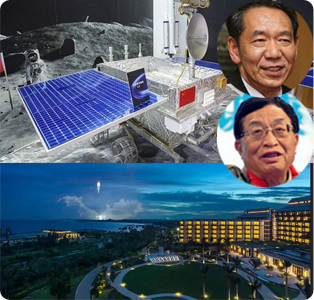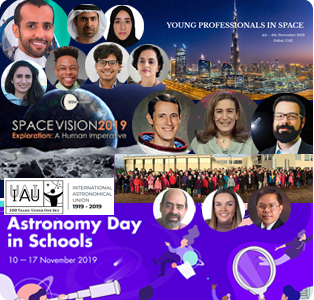Wenchang SLC Spaceport in Hainan, China / Zhongguo Prepares for 2020s Decade
Operations at the newest, largest, and most equatorial China Spaceport are preparing for a new 2020s Long March 5 era advancing Chang’e-5 Moon, Space Station and first Mars Missions. Long March 5 has arrived in Wenchang, having been transported via Yuanwang 21 and 22 cargo ships from Tianjin to Qinglan Port – a significant logistical advantage over landlocked spaceports, allowing for rocket booster segments of large diameter to be transported. Sometimes described as “China’s Hawaii”, sharing 19° N latitude with both Hawaii and Chang Mai, Thailand, Hainan / Wenchang takes advantage of the rotational speed of Earth. Over 2 years of arduous technical review has followed the last unsuccessful launch attempt, eventually identifying turbo pump malfunction as the cause of failure. The long-awaited return of China flagship rocket will be a makeup of sorts, with the Shijian 20 experimental communications satellite taking the place of the lost Shijian 18. With liftoff weight of 869,000 kg, LEO payload capacity of 25,000 kg, GTO payload capacity of 14,000 kg and TLI payload capacity of 8,200 kg, Long Mach 5 is designed to be “capable of launching different kinds of satellites, space station and lunar probe” according to CNSA. Lunar sample return mission Chang’e 5, Mars Global Remote Sensing Orbiter and Small Rover (HX-1), Tianhe Core Cabin Module (CCM), and a crewed spacecraft test flight are all missions slated to be launched from Wenchang in 2020. (Pictured: Wu Weiren and Ye Peijian, Leaders of Chinese Lunar Exploration Program; Image Credits: CNSA, Hilton Wenchang, Hong Kong Polytechnic University) |
MONDAYHighlights…
|

![]() = All times
= All times
for terrestrial events in local time unless noted.
![]() = All times for international terrestrial events in local time unless noted.
= All times for international terrestrial events in local time unless noted.
![]() = All times for space events, and…
= All times for space events, and…
![]() = All times for international space / astro events in Hawaii Standard Time unless noted. Add 10 hours to obtain UT (‘Universal Time’).
= All times for international space / astro events in Hawaii Standard Time unless noted. Add 10 hours to obtain UT (‘Universal Time’).
Weekly Planet Watch – Evening Planets: Venus (SW), Jupiter (SW), Saturn (SW), Uranus (E), Neptune (S); Morning Planets: Mars (ESE).
International Space Education Events Connect Students and Professionals in UAE, USA; and Globally Through IAU100 Initiative
|
Continued from…
|
TUESDAY
![]() Nov 5 — Heinlein Prize Trust, International Institute of Space Commerce, London, United Kingdom: 2019 Roundtable on Value and Benefit Creation in Commercial Space.
Nov 5 — Heinlein Prize Trust, International Institute of Space Commerce, London, United Kingdom: 2019 Roundtable on Value and Benefit Creation in Commercial Space.
![]() Nov 5-7 — Lunar and Planetary Laboratory, University of Arizona, Tucson AZ: Workshop: Asteroid Science in the Age of Hayabusa2 and OSIRIS-REx.
Nov 5-7 — Lunar and Planetary Laboratory, University of Arizona, Tucson AZ: Workshop: Asteroid Science in the Age of Hayabusa2 and OSIRIS-REx.
![]() Nov 5-8 — NASA Mars Exploration Program, Mars Program Office, Jet Propulsion Laboratory, Caltech, NASA Astrobiology Institute, LPI, USRA, Carlsbad NM: Conference: Mars Extant Life – What’s Next? at National Cave and Karst Research Institute.
Nov 5-8 — NASA Mars Exploration Program, Mars Program Office, Jet Propulsion Laboratory, Caltech, NASA Astrobiology Institute, LPI, USRA, Carlsbad NM: Conference: Mars Extant Life – What’s Next? at National Cave and Karst Research Institute.
![]() Nov 5 — Apollo Asteroid 2019 UH5: Near-Earth Flyby (0.034 AU)
Nov 5 — Apollo Asteroid 2019 UH5: Near-Earth Flyby (0.034 AU)
![]() Nov 5 — Apollo Asteroid 2012 PW: Near-Earth Flyby (0.078 AU)
Nov 5 — Apollo Asteroid 2012 PW: Near-Earth Flyby (0.078 AU)
WEDNESDAY
![]() Nov 6 — Space Florida, Florida Venture Forum, Orlando FL: 2nd Annual Florida Aerospace Capital Forum.
Nov 6 — Space Florida, Florida Venture Forum, Orlando FL: 2nd Annual Florida Aerospace Capital Forum.
![]() Nov 6 — Institute of Physics London and Southeast Branch, University of Hertfordshire, Hatfield, United Kingdom: Lecture: Mysteries of the Solar System.
Nov 6 — Institute of Physics London and Southeast Branch, University of Hertfordshire, Hatfield, United Kingdom: Lecture: Mysteries of the Solar System.
![]() Nov 6-7 — Space Studies Board of the National Academies, Irvine CA: Space Studies Board Meeting.
Nov 6-7 — Space Studies Board of the National Academies, Irvine CA: Space Studies Board Meeting.
![]() Nov 6-7 — East Asian Observatory / James Clerk Maxwell Telescope, Taipei, Taiwan: 4th Annual James Clerk Maxwell Telescope Users Meeting.
Nov 6-7 — East Asian Observatory / James Clerk Maxwell Telescope, Taipei, Taiwan: 4th Annual James Clerk Maxwell Telescope Users Meeting.
![]() Nov 6-8 — Venus Exploration Analysis Group, NASA, Laboratory for Atmospheric and Space Physics, Boulder CO: VEXAG Meeting #17, NASA community-based forum to provide Venus scientific input and technology development plans.
Nov 6-8 — Venus Exploration Analysis Group, NASA, Laboratory for Atmospheric and Space Physics, Boulder CO: VEXAG Meeting #17, NASA community-based forum to provide Venus scientific input and technology development plans.
![]() Nov 6-8 — The National Academies of Sciences, Engineering and Medicine, Washington DC: Space Studies Board Fall Meeting 2019.
Nov 6-8 — The National Academies of Sciences, Engineering and Medicine, Washington DC: Space Studies Board Fall Meeting 2019.
![]() Nov 6 — Moon: 3.6° SSE of Neptune, 22:00; at apogee (distance 405,076 km), 23:00.
Nov 6 — Moon: 3.6° SSE of Neptune, 22:00; at apogee (distance 405,076 km), 23:00.
THURSDAY
![]() Nov 7 — Lunar and Planetary Laboratory, University of Arizona, Tucson AZ: Kuiper and Apollo – A Talk for the Occasion of the Fiftieth Anniversary of the Apollo 11 Landing; by Author Derek Sears.
Nov 7 — Lunar and Planetary Laboratory, University of Arizona, Tucson AZ: Kuiper and Apollo – A Talk for the Occasion of the Fiftieth Anniversary of the Apollo 11 Landing; by Author Derek Sears.
![]() Nov 7 — Princeton University Dept. of Physics, Princeton NJ: Colloquium: The Event Horizon Telescope – Imaging a Black Hole; by Sheperd Doeleman from Center for Astrophysics, Harvard & Smithsonian.
Nov 7 — Princeton University Dept. of Physics, Princeton NJ: Colloquium: The Event Horizon Telescope – Imaging a Black Hole; by Sheperd Doeleman from Center for Astrophysics, Harvard & Smithsonian.
![]() Nov 7-9 — Students for the Exploration and Development of Space (SEDS), Arizona State University, et al, Tempe AZ: SpaceVision 2019 Explore: A Human Imperative.
Nov 7-9 — Students for the Exploration and Development of Space (SEDS), Arizona State University, et al, Tempe AZ: SpaceVision 2019 Explore: A Human Imperative.
![]() Nov 7 — Apollo Asteroid 2019 UO7: Near-Earth Flyby (0.010 AU)
Nov 7 — Apollo Asteroid 2019 UO7: Near-Earth Flyby (0.010 AU)
![]() Nov 7 — Apollo Asteroid 2019 UL4: Near-Earth Flyby (0.043 AU)
Nov 7 — Apollo Asteroid 2019 UL4: Near-Earth Flyby (0.043 AU)
FRIDAY
![]() Nov 8 — Peninsula Astronomical Society, Los Altos Hills CA: Lecture: Eclipse Extravaganza!
Nov 8 — Peninsula Astronomical Society, Los Altos Hills CA: Lecture: Eclipse Extravaganza!
![]() Nov 8 — Royal Astronomical Society (RAS), London, United Kingdom: RAS Ordinary Meeting; High Precision Photometry for Exoplanet and Time Domain Astronomy Meeting; and Observing and Simulating Earth’s Core and the Magnetic Field Meeting.
Nov 8 — Royal Astronomical Society (RAS), London, United Kingdom: RAS Ordinary Meeting; High Precision Photometry for Exoplanet and Time Domain Astronomy Meeting; and Observing and Simulating Earth’s Core and the Magnetic Field Meeting.
![]() Nov 8 — Apollo Asteroid 2019 UR4: Near-Earth Flyby (0.019 AU)
Nov 8 — Apollo Asteroid 2019 UR4: Near-Earth Flyby (0.019 AU)
SATURDAY
![]() Nov 9 —San Antonio Astronomical Association, Guadalupe River State Park TX: Star Party with San Antonio Astronomical Association.
Nov 9 —San Antonio Astronomical Association, Guadalupe River State Park TX: Star Party with San Antonio Astronomical Association.
![]() Nov 9 — Venus: 3.9° N of Antares, 10:00.
Nov 9 — Venus: 3.9° N of Antares, 10:00.
![]() Nov 9 — Mars: 2.83° NNE of Spica, 14:00.
Nov 9 — Mars: 2.83° NNE of Spica, 14:00.
SUNDAY
![]() Nov 10-15 — Tennessee Valley Interstellar Workshop, Ad Astra Kansas Foundation, Wichita State University, NASA Wichita KS: The 6th Interstellar Symposium and Advanced Interstellar Propulsion Workshop; with Cosmosphere tour on November 13.
Nov 10-15 — Tennessee Valley Interstellar Workshop, Ad Astra Kansas Foundation, Wichita State University, NASA Wichita KS: The 6th Interstellar Symposium and Advanced Interstellar Propulsion Workshop; with Cosmosphere tour on November 13.
![]() Nov 10-17 — International Astronomical Union, Multiple Locations: IAU100 Astronomy Day in Schools, which also marks World Science Day for Peace and Development on Nov 10, and Mercury transit on Nov 11.
Nov 10-17 — International Astronomical Union, Multiple Locations: IAU100 Astronomy Day in Schools, which also marks World Science Day for Peace and Development on Nov 10, and Mercury transit on Nov 11.
![]() Nov 10 — Moon: 4.1° SSE of Uranus, 22:00.
Nov 10 — Moon: 4.1° SSE of Uranus, 22:00.
![]() Nov 10 — Apollo Asteroid 2019 UB7: Near-Earth Flyby (0.035 AU)
Nov 10 — Apollo Asteroid 2019 UB7: Near-Earth Flyby (0.035 AU)

